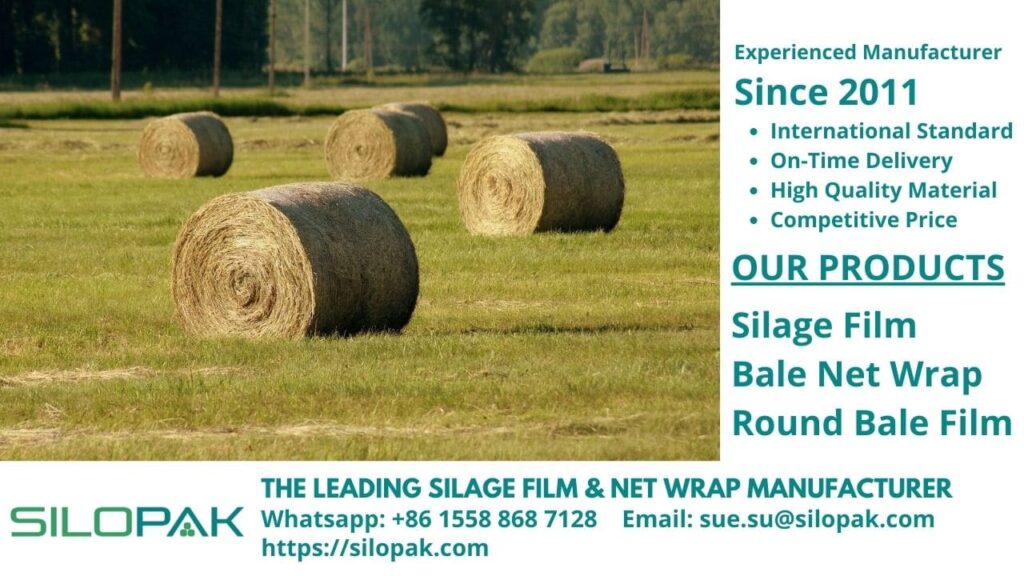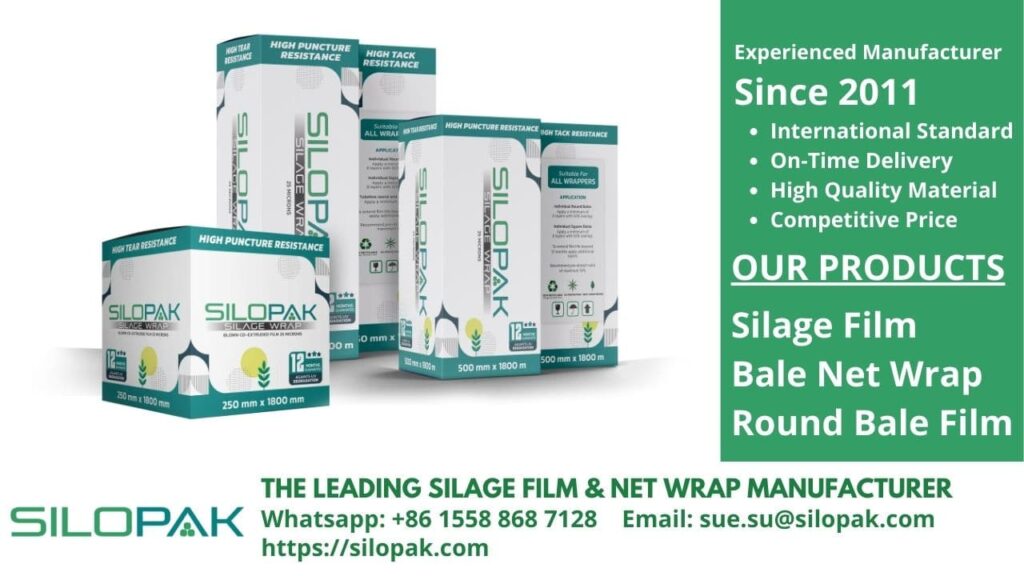
Hay is preserved by drying, silage is preserved by fermentation, and Haylage is in between. In haymaking, the faster the grass dries, the better it will be. Too long the drying process will make the loss of nutrients. In the storage technique, store the hay in a dry room. Before it is milled and stored, it needs to be cut first. The cutting is done when the grass is mature; then it is left to dry in the field, then it is baled and stored. The grass should be dry enough before threshing to save hay and prevent rot or mildew. Hay with insufficient dry matter will not be stored and will most likely be moldy, so avoid giving it to livestock.
Hay is different from Haylage; Haylage tends to be cut early in the season to allow it to wither for a shorter time in the field. Next, the Haylage will be wrapped and wrapped in several layers of good-quality plastic. The difference lies in the conservation, which depends on the removal of moisture. Haylage usually has 50 percent to 70 percent DM or Dry Matter. Making hay and Haylage requires a baling process that requires plastic.
You can get the best wrapping plastic for hay and Haylage through our official website; we are Silopak. We provide high-quality silage film, bale net wrap, round bale film that uses only premium resin in its manufacture. We are an experienced bale net wrap manufacturer. Since 2011 we have exported our products to various countries.
We help farmers and ranchers to maintain the nutrition of animal feed. Only use our products to maintain the content of the animal feed so that livestock health is guaranteed. You don’t need to hesitate, because our products are resistant to extreme weather, making them suitable for use in all seasons. Customer experience and satisfaction are good things for us to continue to provide quality products.
Purpose of Making Hay
Hay is forage that is cut and dried so that it can be given to livestock as feed. It has several goals, including:
- It is mainly given at the time of forage shortage or dry season.
- It aims to equalize harvest time so as not to interfere with growth in the next period. Uniform plants will have higher digestibility.
- It also aims to be able to store green plants that are over-harvested for a certain period so that they can overcome difficulties in obtaining forage food during the dry season and extreme weather.
The requirements for hay-made plants must be fine-textured, harvested early in the flowering season, and harvested from fertile areas.

Hay Making Process
Two ways can be done in making hay, namely:
- The overlay method is a simple method that is done by spreading the cut forage in an open field under the sun. Every day the bed will be turned over to dry. This way will produce hay with a moisture content of 20 percent to 30 percent of the hay color marker is brown.
- Pod method is a method that uses a shelf as a place to store forage that has been dried for 1 to 3 days (with a moisture content of approximately 50 percent). Forage should be harvested just before flowering because it has a high crude protein content, crude fiber and has optimal water content. The use of this method makes the hay obtained not moldy.
Difference between Hay and Haylage
The difference between hay and Haylage also lies in how much to feed the cattle. Haylage has a greater amount of moisture than hay. Feeding livestock depends on the weight of livestock. For example, a horse weighing 500 kilograms requires 10 kilograms of dry matter forage per day; it will need 11.8 kilograms of hay as feed, assuming the hay content of Dry Matter is 85 percent and 16.7 kilograms of Haylage as feed, assuming the content of dry matter.
DM or Dry Matter is 60 percent. The key to the analysis in animal feeding lies in the moisture content in the animal feed. So, you have to pay attention to the type of feed to maintain the health of cattle.

